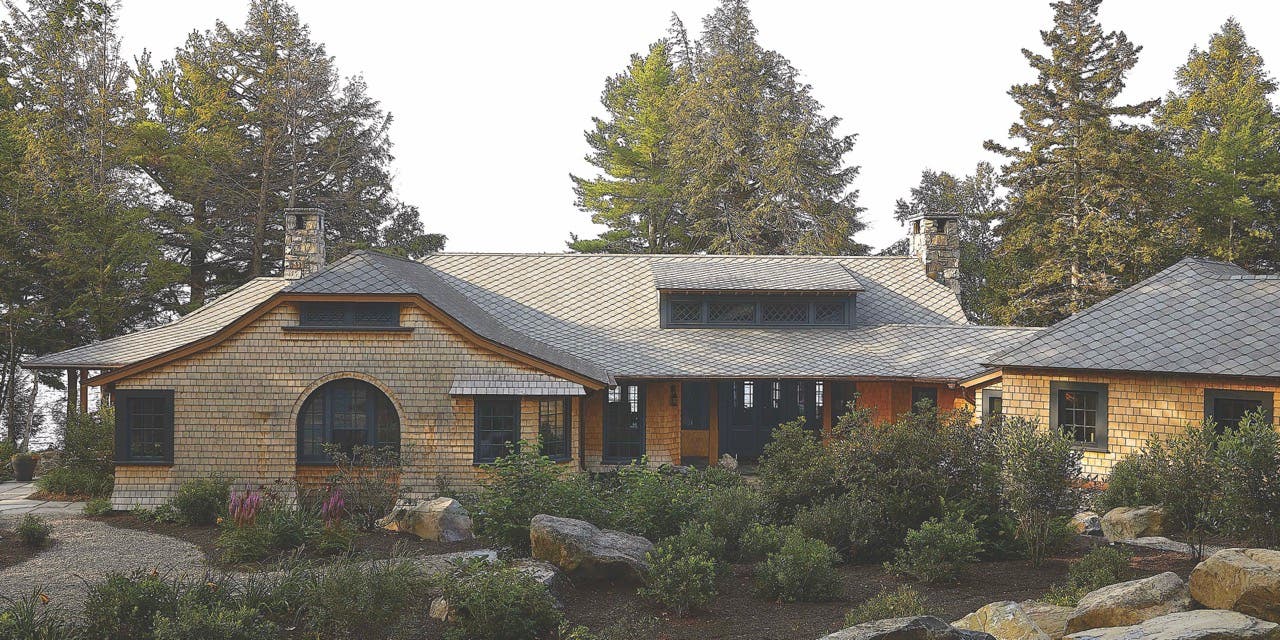
Michael G. Imber Architects: Moosehead Lake Lodge
In the remote wilderness of the North Maine woods, by Moosehead Lake, there once was an old fishing camp.
The 125-acre site is as special as the new generational summer lodge that Texas-based Michael G. Imber Architects designed for a couple, their children, and their grandchildren. (The husband is an avid fisherman, and the couple also commissioned the Imber firm to build a vacation house for them in the Bahamas.)
In earlier days, the property served as a sacred gathering spot for indigenous peoples who scouted it for flint to make arrowheads and tools.
Located only a short distance from the lake (today’s regulations wouldn’t allow it to be so close to the water), the camp provided the groundwork for the footprint of the new structure, which is nestled into the site within the current height and size limitations.
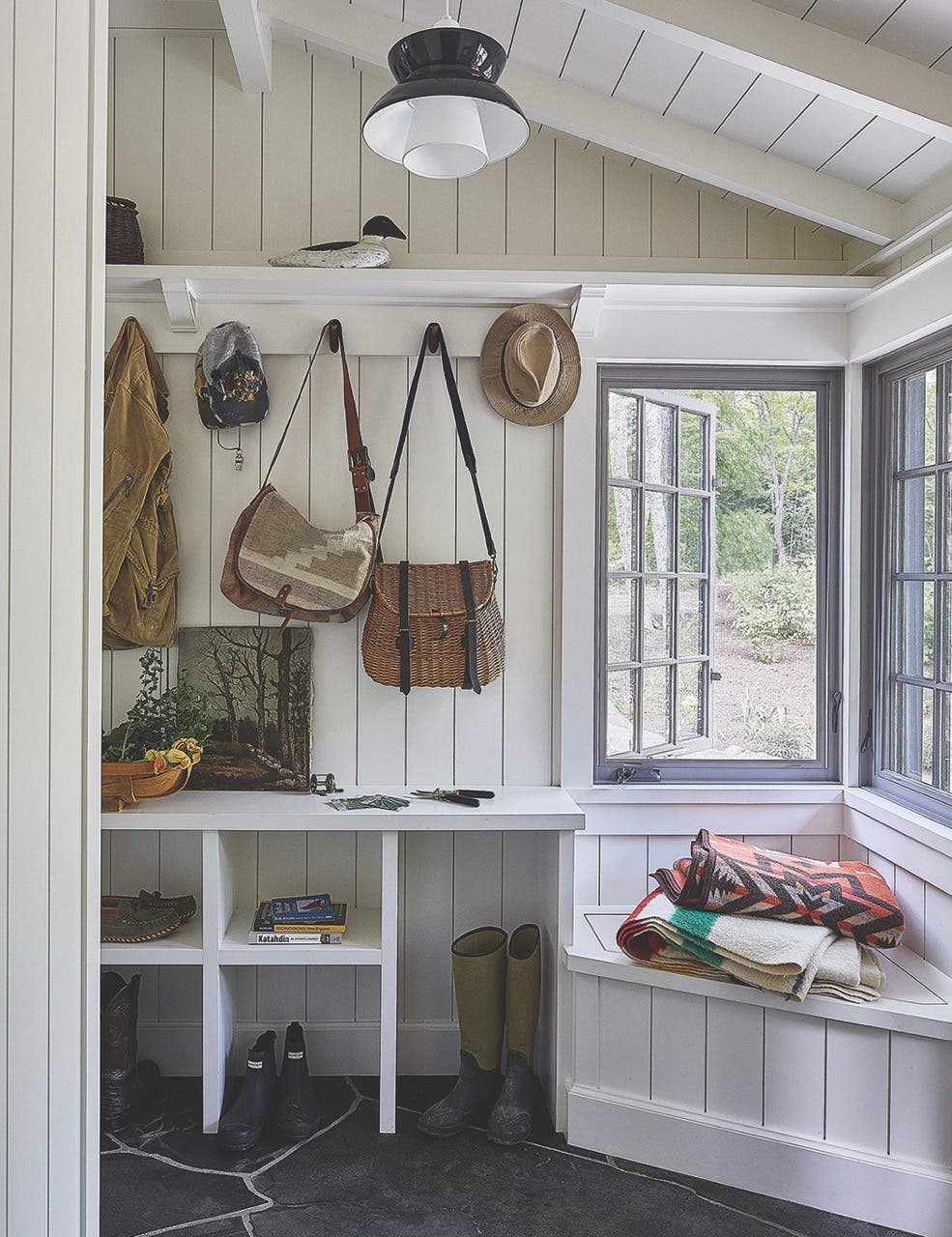
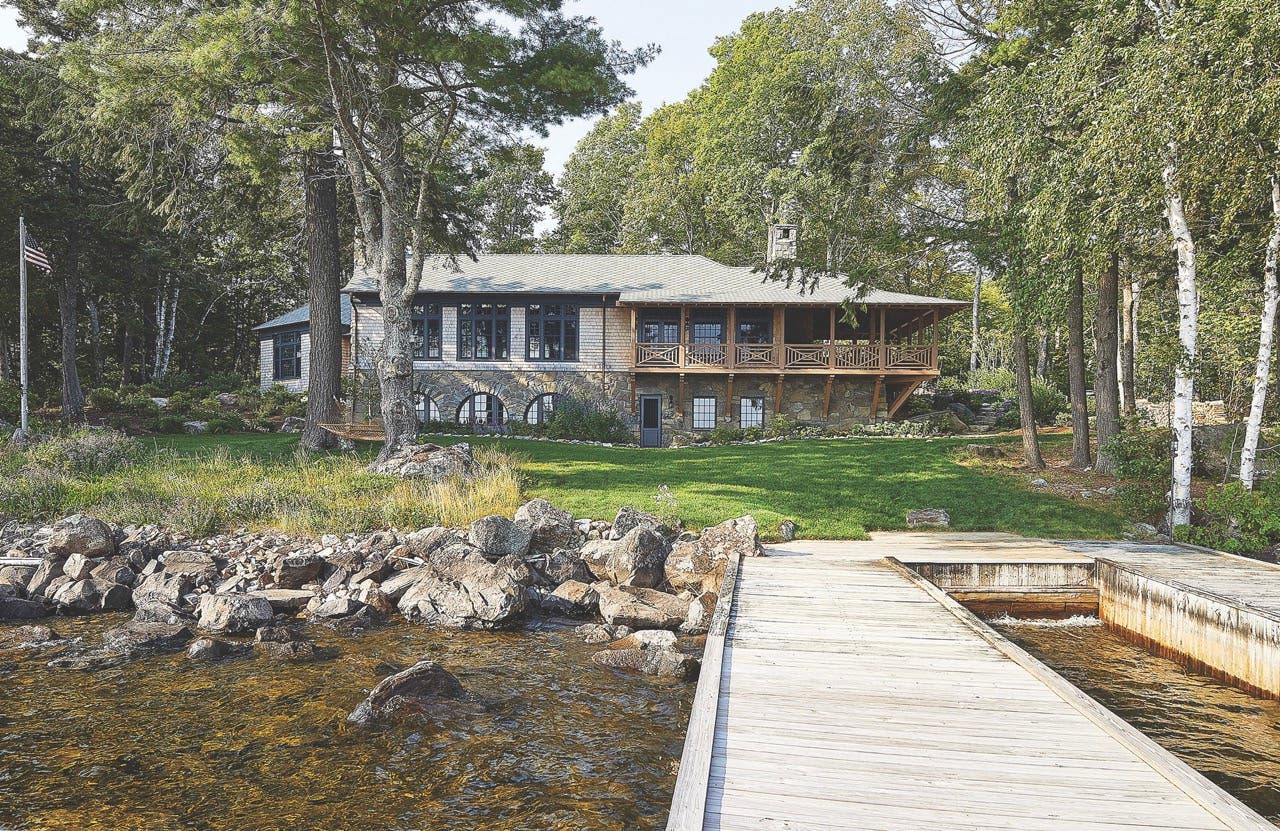
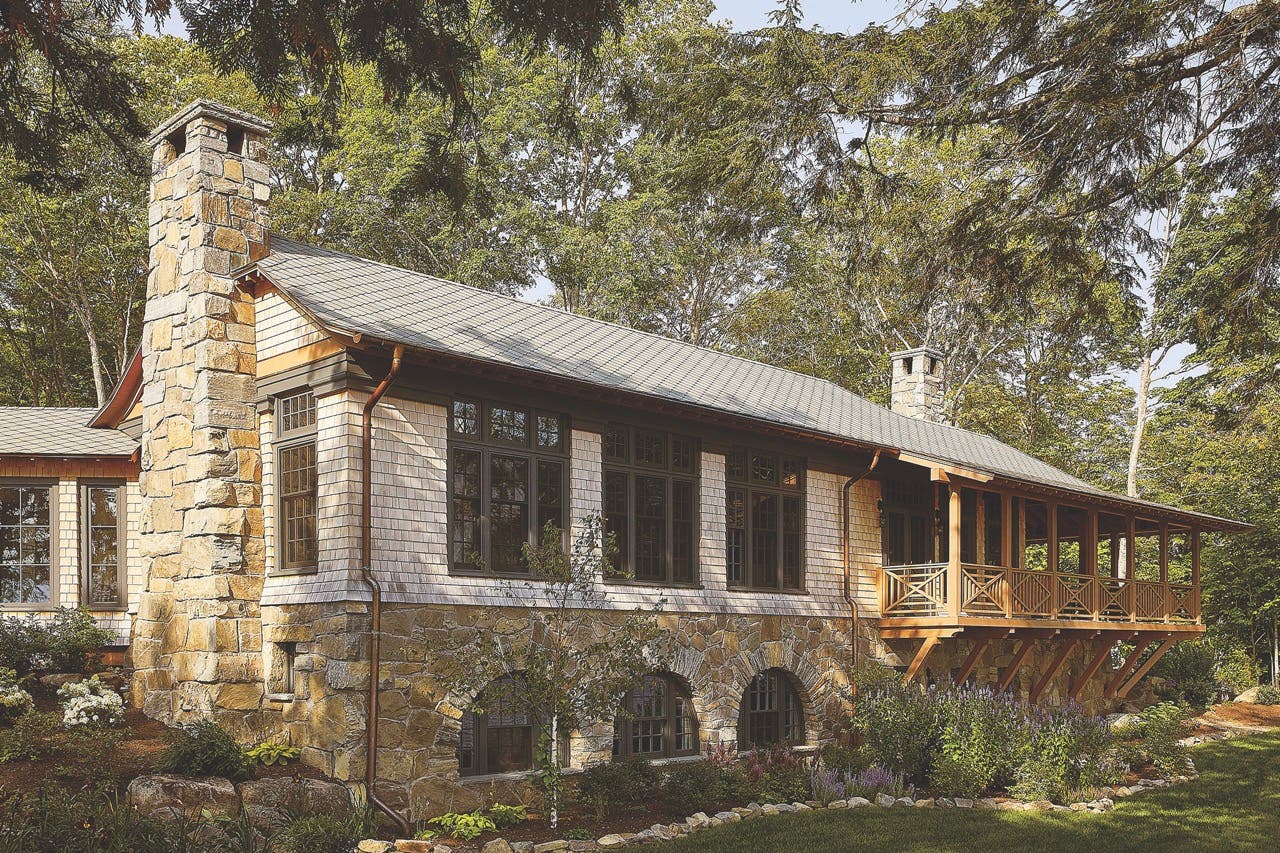
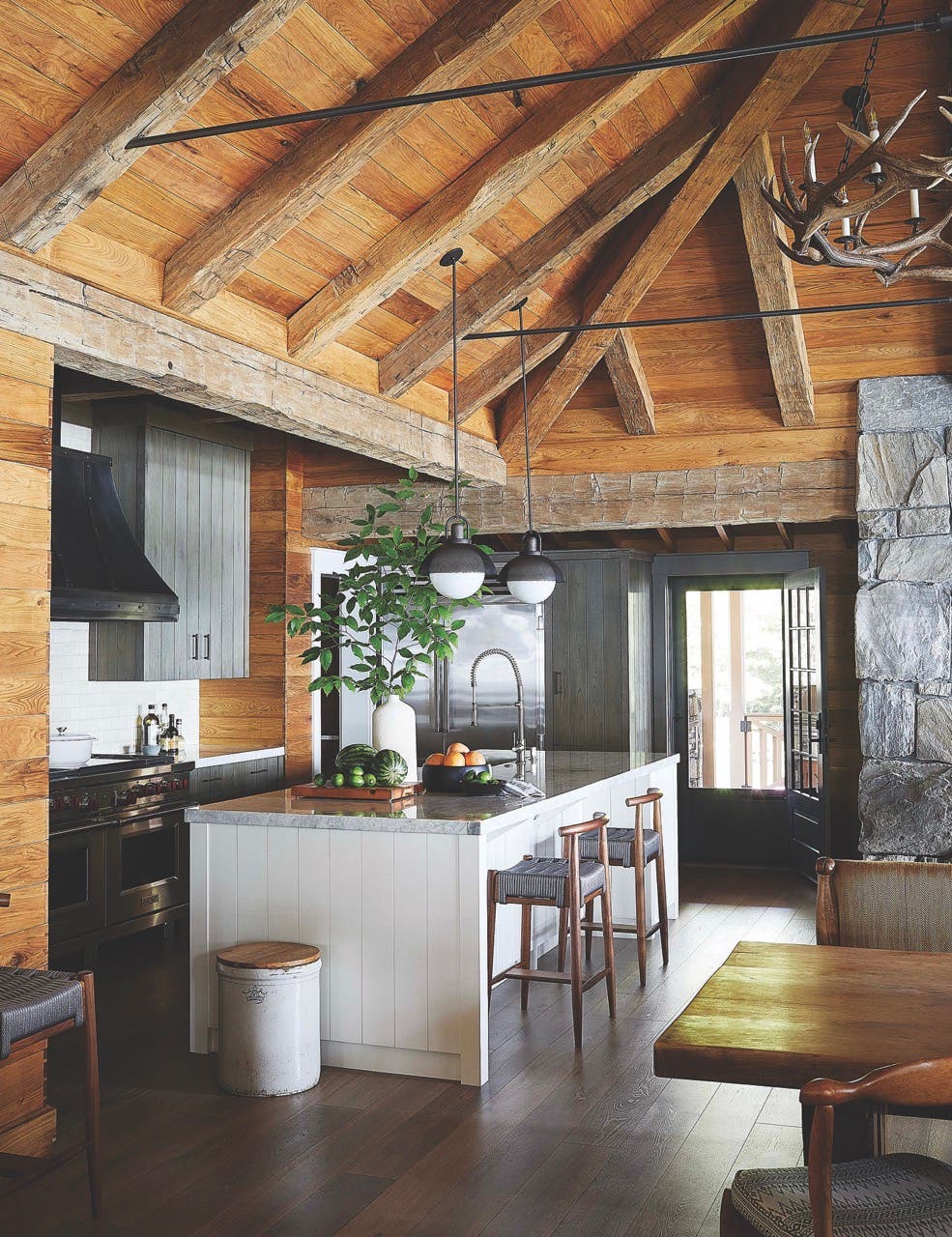

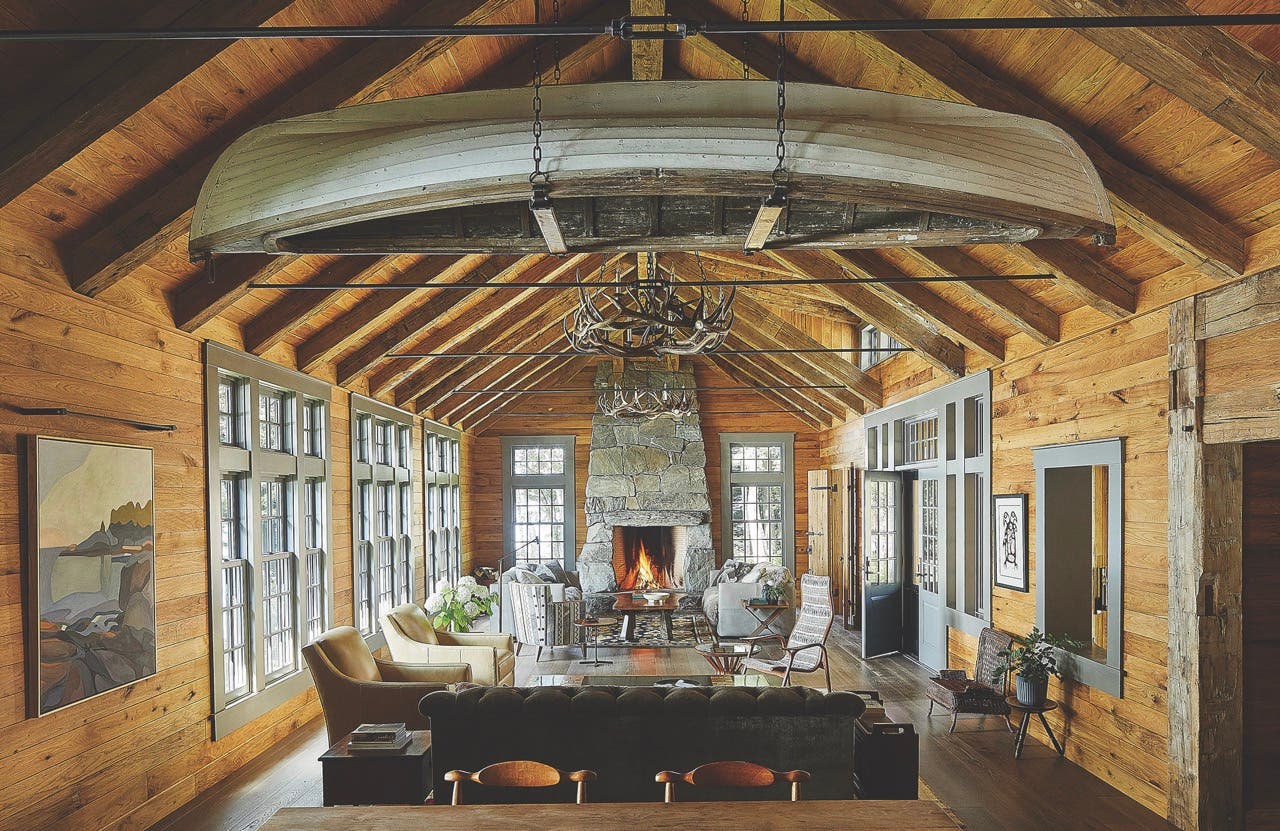
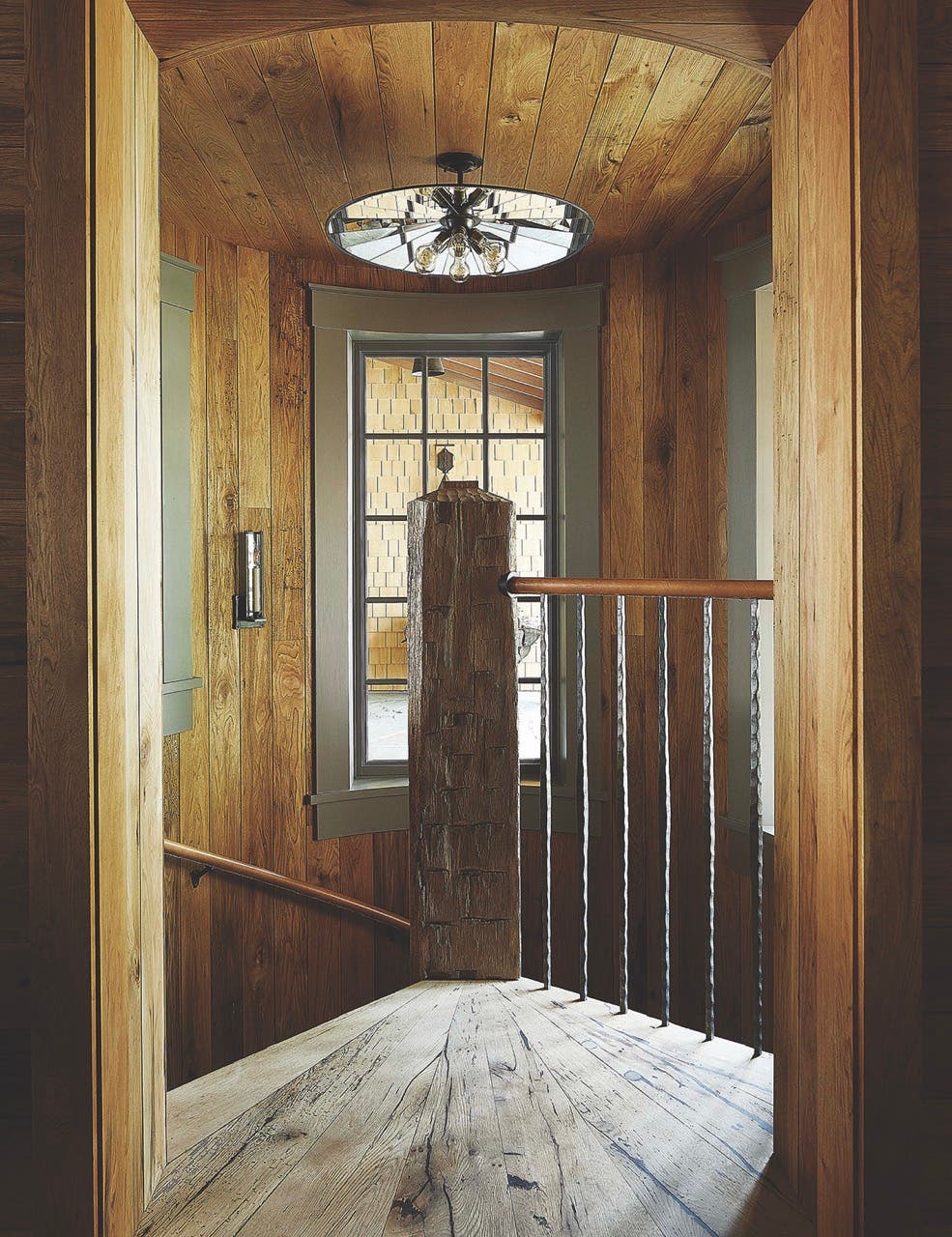
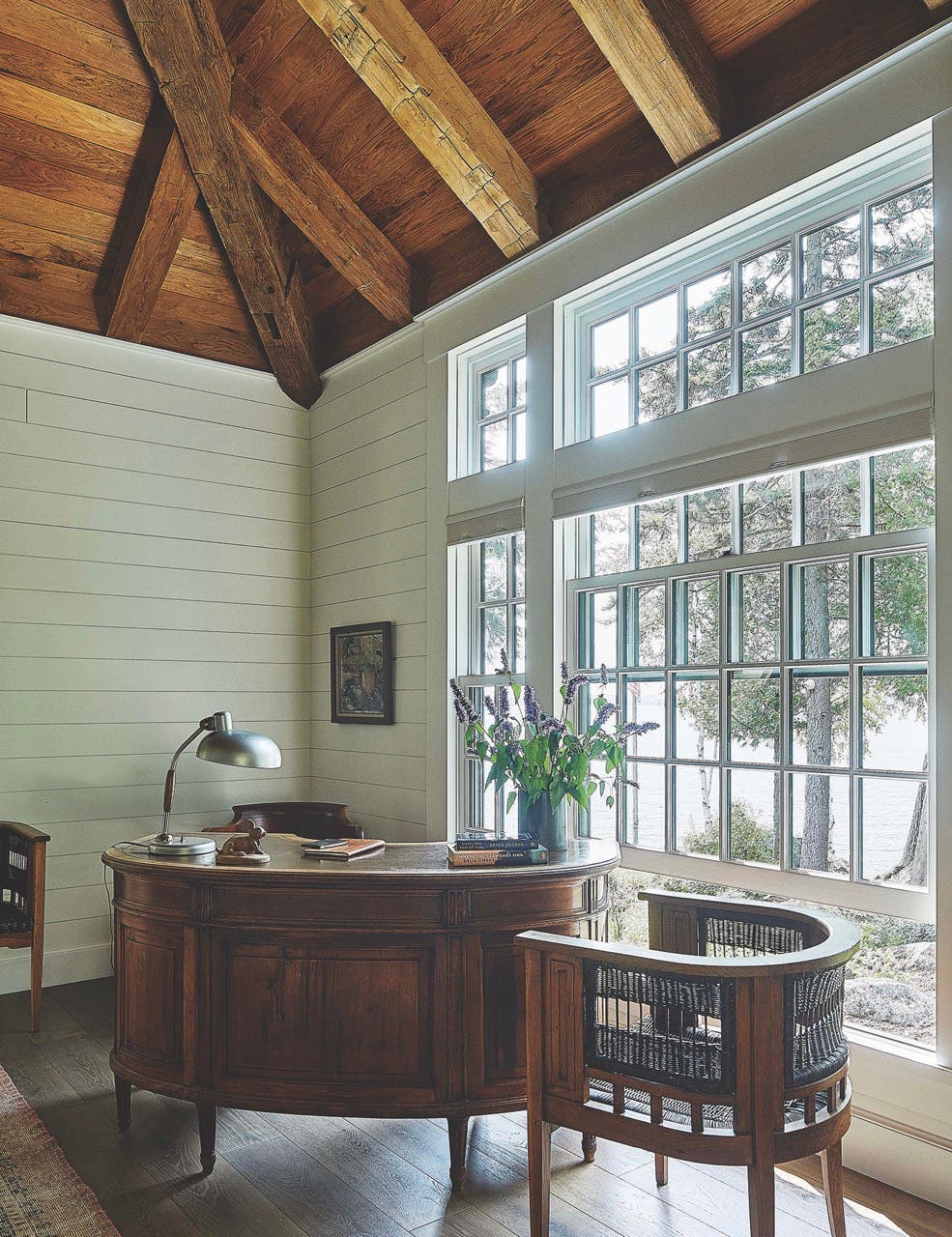
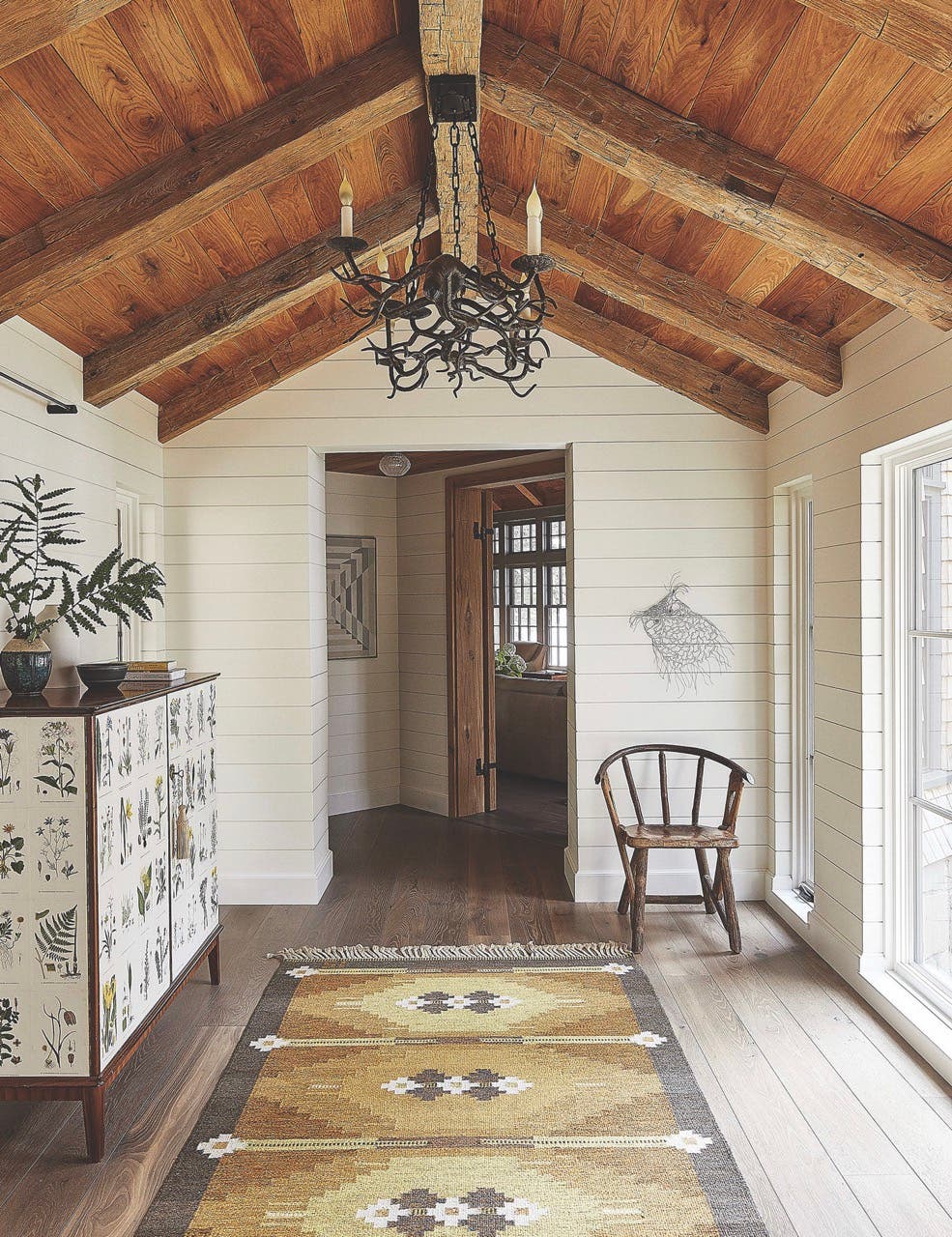
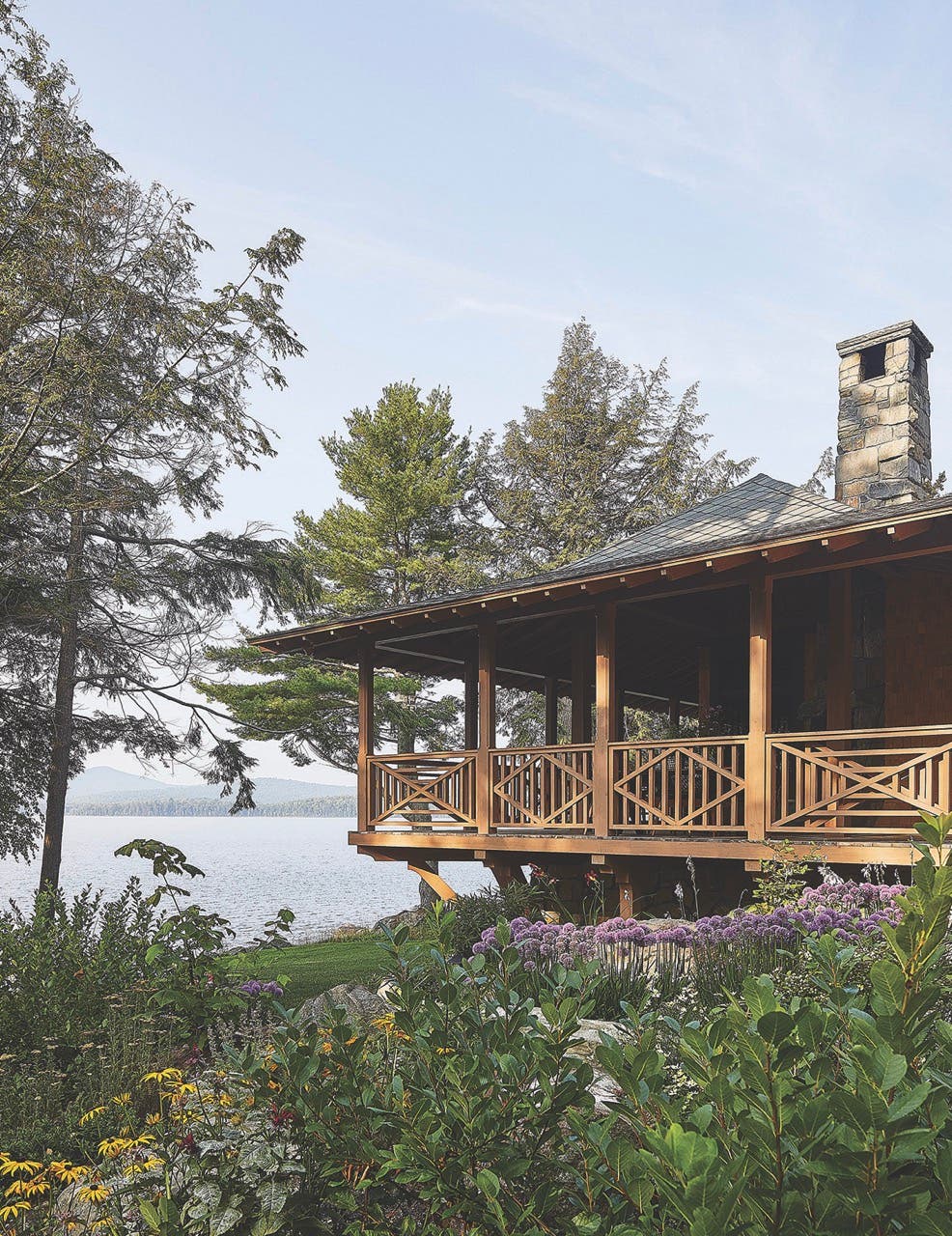
The new lodge, which is so remote that the easiest access, when the long unpaved road is impassable, is only by boat, seaplane, or snowmobile, replaces the original camp and its icehouse, fitting within the compound that also included a boathouse and a maple-syrup-making shack.
“It’s really hunkered down on the site,” says Michael G. Imber Partner Mac White, AIA, who served as project architect. “It’s unassuming, but then it opens up to the majestic views of the lake.”
The Imber team used large native stones to anchor the lodge, which is defined by its low and sleek massing and is set among the remnants of the alluvial glacial boulders scattered across the site.
Anchored by a large stone chimney, the lodge, clad in stone and western-cedar shingles, pairs the architectural attributes of the traditional Maine-style rusticator cottages of the lake with the classic Adirondacks cabin. Its diamond-shaped roof shingles are a nod to the traditional materials.
The structure’s main features include a covered outdoor room on the lake side that’s cantilevered from the main structure with bold fir brackets, and a separate wing folding toward the long lake views houses the primary suite and the great room, which encompasses the main living space, kitchen, and dining area and is anchored by an immense stone fireplace.
“This project really is about the materiality that draws from the tradition of the cabins of Maine and the Northeast,” White says.
He notes that the use of shingles on the exterior is an integral part of the style’s vocabulary. As are the repurposed white oak barn wood in the timber frame of the great room’s ceiling, the local, native butternut on its walls, and its European white oak flooring, all of which embrace the rustic local Maine granite of the fireplace and the massing of the stone base of the house.
“We kept the wood finishes natural, with the painted trim providing an accent,” he says. “Another unique aspect is the stone floors that are made of boulders that were found on site and sawn into large flagstone slabs. By using these natural materials, we wanted to make the lodge look as though it were growing up out of the landscape, and in this case it really was.”
One special feature of the great room is the antique wooden dory hanging over the dining table. Discovered below the deck of the original cabin, it has been repurposed as a sculptural lighting fixture that’s suspended from the ceiling by iron hangers and leather straps.
“It has just the right amount of patina,” White says. “And it pays homage to the old house and life on the lake.”
The real beauty of the lodge lies in the little things. “We played with details at every level,” White says. “And we carried them to the finite level.”
This is particularly evident in the great room. “The transition from it to the kitchen is expressed with dovetail joinery as you turn the corner,” White says. “It feels like cabinetry instead of trim.”
The lodge’s spiral staircase is another study in rustic sophistication. Its newel post is a rugged oak trunk, and its hammered-iron pickets are topped by a handrail of wrapped leather that, like a car’s steering wheel cover, is stitched in place.
The work on the lodge was timed with the weather. In this part of Maine, snows typically cut off the site from the first week of December until mid-May.
During the first season, the team managed to lay the foundations and set and cover the first floor before the start of the winter season. The contractor worked offsite, building the partition walls that were to be installed in the spring.
The second winter, work commenced inside the lodge with workers and craftsmen—and once even White when the temperature was 17 below—commuting across the frozen lake on snow mobiles. “It’s the coldest I’ve ever been in my life, but it was well worth it in the end,” he says.
White credits the client and the exuberant spirit of collaboration by all parties involved with the success of the project.
“A vision of Maine living, this serene escape complements the surrounding woodlands and creates an idyllic spot for fishing and soaking in the sunsets,” White says. TB
Key Suppliers
Architect
Michael G. Imber Architects
Interior Design Jodi Maley
Contractor and Timbers and Interior Finishes
Nate Holyoke Builders
Butternut Timber
Hearn Hardwoods
Reclaimed White Oak
Antique Board & Beams
Rustic European White Oak Flooring
Ethan Bessey Lumber Products
Mason
Harkins Masonry
Stone Supplier JC Stone
Tile Installer
Jamison Tile & Alan Pratt
Stone Harvesting and Prep
Freshwater Stone
Landscape Architect
Atlantic Landscape
Decorative Lighting
Kevin Clark Originals (antler chandeliers); Robert Ogden
See the complete list of 2024 Palladio Award Winners


